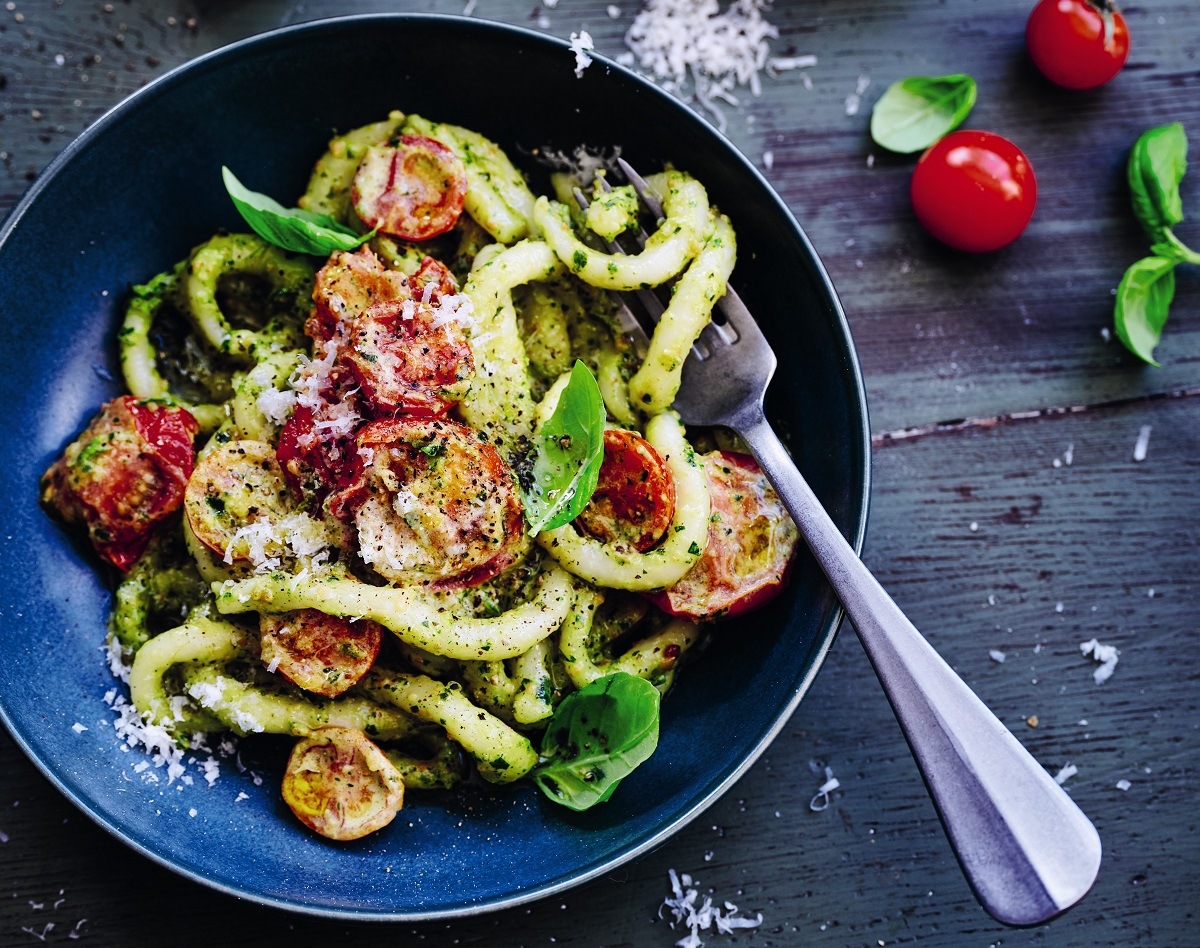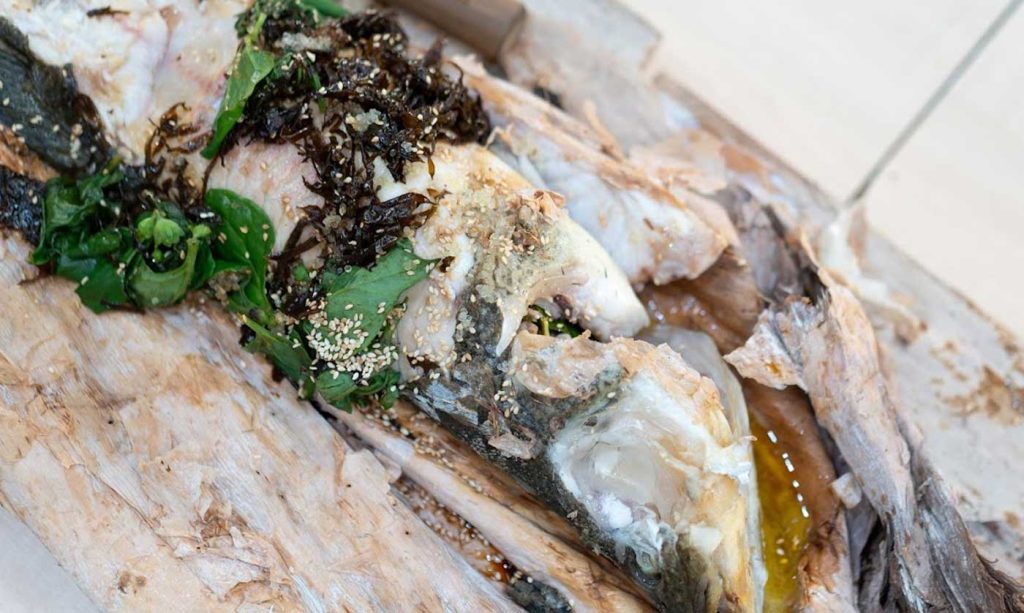Miguel’s Pici Pesto Pasta
Published 21 Oct, 2021
Miguel’s Pici Pesto Pasta
“If you want to get your family involved in making one of my dishes, this is the one! It doesn’t matter how thick or thin the pici are rolled, the only thing that matters is the mantecare. This is the magical process of emulsifying the sauce with the residual pasta-cooking water. You need a really big mixing box and plenty of tossing and mixing to achieve this, and it is the one thing that will make your pasta perfect.”
https://www.instagram.com/tv/CVkK5h_B9ov/?utm_medium=copy_link
Serves 4
Ingredients:
- 225g (1 1/2 cups) ’00’ flour or plain flour, plus extra as needed
- 2 pinches of salt flakes
- 1 teaspoon of finely grated parmesan
- 3 tablespoons thickened cream
- 320g mixed mini tomatoes, halved
- 1 tablespoon of extra-virgin olive oil
- Small basil leaves and more grated parmesan to serve
For the Pesto
- 2 garlic cloves, peeled
- 2 pinches of salt flakes, or to taste*
- 100g (2 packed cups) freshly washed basil leaves, still wet and roughly chopped
- 2 tablespoons of pine nuts, toasted
- 125ml (1/2 cup) mild extra-virgin olive oil
- 3 tablespoons finely grated pecorino
- 3 tables spoons finely grated parmesan
- Freshly ground black pepper
Method:
- Place the flour, salt and parmesan in the bowl of a food processor, add 125ml (1/2 cup) of warm water and process until the dough forms a ball. It should be smooth with the consistency of modelling clay, so a little extra flour if needed. Wrap the dough and rest in the fridge so the gluten can relax, making it easier to roll out. Rest for at least 1 hour, though you can leave it for up to 24 hours.
- To make the pesto, put the garlic and salt in a large mortar and use the pestle to pound to a paste, Add the basil and pine nuts in batches, and pound to break them up and form a paste. Gradually add the oil and mix until combined, then stir in the cheese. Taste and season with pepper and more salt if needed.
- Pinch off a 2-3 cm piece of the rested dough and place between the palms of your hands. Roll into a log, then roll the log outwards with both palms, applying pressure evenly to form a noodle the same thickness as a fine pencil. Finish rolling on a clean surface (no extra flour) to the width of a fine green bean. Don’t worry about being too precise – they are meant to be irregular. Place on a baking tray lined with baking paper and repeat with the remaining dough. (Alternatively, you can pat out the dough to a 3mm thick rectangle and cut strips of dough, then roll, pressing lightly on each strip to roll it into a long worm shape about 3-4mm thick).
- When you are ready to cook the pasta, bring a large, wide-based saucepan of salted water to the boil. Add the pasta and cook for 4-5 minutes until al-dente.
- Meanwhile combine the cream, tomatoes and 3 tablespoons of pesto in a large mixing bowl. Using tongs, transfer the cooked pici from the boiling water straight inot the sauce, add the oil and toss to coat well.
- Divide among bowls and serve topped with the basil leaves and grated parmesan.
Tips: Store the leftover pesto in an airtight container, covered with a thin layer of oil. It will keep in the fridge for up to 1 week.
*The amount of salt required for the pesto will depend on the type of cheese you use. Some can be very salty so taste as you go. You can use 50g (1/2 cup) of parmesan if you don’t have any pecorino.
Discover the Harris Scarfe Cooking Club for exclusive celebrity chef recipes, cooking tips & tricks and more!
![]()
This recipe is from Miguel’s new book Feast. Feast has 100 generous recipes that are designed to share and is now available to buy from your favourite book retailer. Feast by Miguel Maestre is published by Plum.












